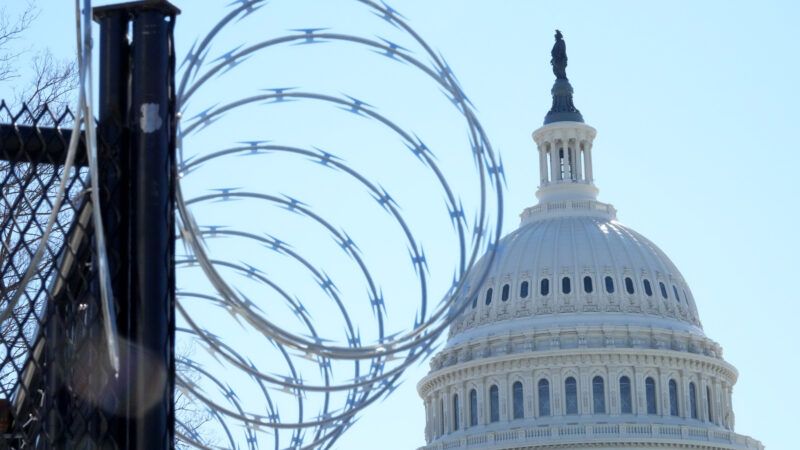Remove the Fences Surrounding the Capitol and Send the National Guard Home Now
The threat is over.

Congress canceled Thursday's legislative session and sent lawmakers home due to an alleged threat against the Capitol from right-wing agitators. Now the Capitol Police want the National Guard to continue providing security for another two months.
Frankly, this is absurd. While some desperate remnants of QAnon will probably continue chatting online about restoring former President Donald Trump to his throne, the likelihood of another attack is virtually nonexistent. Even the intelligence sources who noted the possibility of the attack did not think it would actually happen, and described the chatter as more "aspirational" than operational. It's a big country, and there will often be some crazy person somewhere making idle threats online; the business of Congress should not come to a screeching halt every time this happens.
While the National Guard's presence in Washington, D.C., was unfortunately justified in the immediate aftermath of the January 6 riots, it is long past time to send the troops home. They should take their barricades with them, too: Barbed wire fences surround not just the Capitol building but several city blocks in the Capitol Hill area. They are both an appalling symbol of authoritarianism—the Capitol is supposed to the people's house, but right now the people can't get anywhere near it—as well as a massive inconvenience for those who live nearby.
I am one such resident. In the days following the Capitol riot, armed guards shut down the street in front of my apartment building and patrolled the sidewalk in front of it. Many small businesses, already reeling from pandemic-related lockdowns, were forced to close their doors and board up their windows in case the rioters returned for President Joe Biden's inauguration. Most of those businesses are open once again, but the military occupation—including the long stretches of barbed wire fencing—have remained in place for weeks.
I witnessed the horrifying attack on the Capitol, and thus I understand why the National Guard was summoned in response to inadequate security measures. But the threat is clearly over. What happened on January 6 was a black swan event: It was difficult to predict and prepare for, because the reality of a sitting president calling on supporters to march to the Capitol and prevent the vice president from certifying the results of an election was completely without precedent. But that was what happened: Trump lied to his followers about the results of the election, encouraged them to take bold and strong action, and then they stormed the building.
But it's precisely because Trump's reckless comments were inextricably linked with what transpired that it's not likely to happen again: Trump is no longer in D.C., stoking the fury of a right-wing mob.
It is sadly common for the U.S. government to make permanent various ill-advised safety requirements following an unanticipated calamity. Two decades after 9/11, the Transportation Security Administration (TSA) is still patting down airline passengers and making them remove their belts and shoes, even though there's no evidence whatsoever that these costly inconveniences make air travel safer. (To take just one example, undercover agents were able to successfully smuggle weapons past the TSA some 95 percent of the time.)
The military occupation of Washington, D.C., must not become another permanent national security fixture. The Capitol building is one of the most enduring symbols of U.S. freedom and democracy—of the idea that the American people are ultimately in charge of their own government. To encircle it forever with the sort of defenses befitting a maximum-security prison would be psychologically scarring, as well as ridiculously expensive and unnecessary.


Show Comments (134)